
Microsoft has revealed the next slate of games hitting Xbox Game Pass this month, and there are a fair few gems in the line-up.
Sports games Cricket 22 and MLB The Show 22 are available on Xbox Game Pass now, with an eclectic mix soon to join them. Action RPG nuts can dig into one of BioWare’s best releases with Dragon Age 2, Star Wars aficionados and flight sim fans have Star Wars: Squadrons to keep them happy, and Panzer Corps 2 will appeal to any strategy wargamers out there.
Life Is Strange: True Colors is one for emotive adventure fans, while The Dungeon of Naheulbeuk, Lost In Random, and Chinatown Detective Agency are all indie picks. Add to that Plants vs. Zombies: Garden Warfare, and you’ve got yourself another four-player co-op option, too.
Here are the exact dates when each game will hit the subscription service:

That’s a fairly impressive range and comes off the back of a stellar March that saw F1 2021, Weird West , and Crusader Kings 3 added to the platform.
Microsoft will need to keep the good times rolling now Sony has unveiled its Xbox Game Pass competitor – the revamped PS Plus . Launching this June, PS Plus's new highest subscription tier will hand subscribers over 700 games to download on-demand, including retro titles from the PS1, PS2, and PS3 eras, as well as a cloud streaming service that can be used on your PS5 , PS4 , or a rusty old PC.
A 12-month subscription to the highest tier of the new PS Plus will be cheaper than an annual subscription to Xbox Game Pass, and Sony will be relying on that affordability to drive players to the platform, alongside the nostalgic temptation of playing the classic PlayStation games of your childhood.
But the new service won’t match Microsoft’s in one key area: day one releases. Sony has made clear that its new, first-party games won’t hit the service on the same day they release. Easy access to the latest triple-A titles from Xbox Studios has partially driven the success of Xbox Game Pass, with subscribers hopping into games like Halo Infinite as soon as they hit shelves.
Get the lowdown on all the differences between the competing subscription services in our rundown of Xbox Game Pass vs. New PS Plus . And understand how the PlayStation’s model is changing in our New PS Plus vs. old Ps Plus breakdown.
Fancy dipping your toe into some of these games? Find the best Xbox Game Pass deals below:
Can fitness trackers provide motivation when it comes to training harder, sticking to a healthy diet and even sleeping better?
We all know that a sedentary lifestyle and poor nutrition increases the risk of developing a serious illness or disease. A lack of sleep has also been linked to neuroendocrine dysfunction – an imbalance in hormone production that increases the likelihood of developing obesity, cardiovascular disease and mood disorders.
This is where the best fitness trackers can help, offering insight, accountability and motivation to improve our lifestyle – whether it’s getting more exercise, improving our diet or getting better quality sleep.
Bryan Byrne, an exercise physiologist at Oxfit , says there are a number of different reasons why fitness trackers can help with motivation, but it’s most likely to do with data access.
“It’s easier to hit your exercise or sleep goals if you have a way to measure and monitor this,” he says. “Seeing your progress and knowing you are closer to your goal is also a motivator to hit your target.”
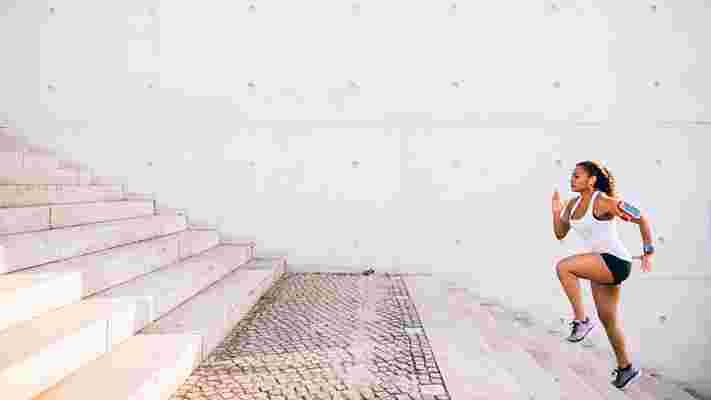
If your goal is to get stronger, lose weight or tone up, then investing in a fitness tracker could be an important motivator, says coach and tactical trainer Farren Morgan .
“Monitoring your steps can establish your current fitness level, and by setting a target and increasing your foot count you will feel motivated to push yourself harder in your next workout,” he says.
“Because of this momentum, people who use fitness trackers on average walk a mile further a day than those who don’t. This not only boosts their step count, but also their fitness and health significantly.”
The more effort and energy you apply to your workouts, the more sleep you will need to rest and recover too, he adds. “This will ultimately improve your sleeping habits as well.”
However, Morgan warns that fitness trackers could hinder motivation for people who have a ‘fixed mindset’ – that is, they believe their talents and abilities are set.
“Someone with a fixed mindset already has self-limiting beliefs and will have an attitude of ‘can’t do’, rather than ‘can do’,” he explains. “But with a growth mindset centred around consistent development, instead of ego and results, the long-term benefits of using a fitness tracker are essentially endless.”
Byrne explains that fitness trackers provide a way to set and monitor small, achievable goals. “Hitting your daily step count or sleep time can also result in a dopamine response,” he adds. “This is the mood boosting neurotransmitter responsible for our feeling of reward. Dopamine’s response in the brain is a strong contributor for continued motivation, as we tend to seek out activities that provide this feeling.”
A study published in the journal Neuron in 2012 also found that dopamine is responsible for maintaining motivation to hit a goal, and not just the feeling of achievement when we complete a task.
“This would indicate that the ability to monitor your progress in real time with a fitness tracker could elicit the dopamine response, motivating you to persevere and maintain effort to hit your goal,” says Byrne.
Another study that looked at users’ experiences of fitness trackers found that the majority of users – 81.4% of current users and 51.3% of former users – had increased their physical activity by wearing a fitness tracker.
However, motivation from a fitness tracker may be short term. The study also found that 68.3% of current users and 70.2% of former users reported a surge in motivation to work out when they initially got their fitness tracker, but this spike soon dipped back to baseline levels.
What’s more, while fitness trackers may give an insight into physical health, they can take a mental toll. Morgan says that consistently measuring your performance can take a toll on mental wellbeing if you apply pressure on yourself to succeed, instead of striving to perform your best. “Your mental health will further decline if you start comparing yourself with other fitness enthusiasts,” he says. “This is the reason why mindset is crucial – you need to be capable of not being so hard on yourself and focusing on your goals and performance. The only real competition is you.”
Byrne also adds that not hitting your goals can be demotivating and may cause lower levels of dopamine, leading to ‘activity aversion’. “This is when we don’t want to engage in an activity as it doesn’t provide a reward response,” he says.
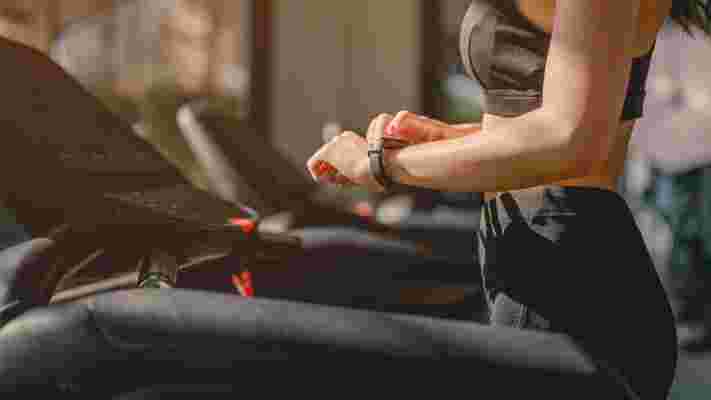
Turning exercise into a game can be motivating, as well as fun, says Morgan. “Using your fitness tracker to compete with friends, family and coworkers on social media or fitness apps like Strava can provide extra motivation to exercise.”
In fact, a 2015 study revealed that gamification improves attitudes towards and enjoyment of exercise, and shapes behavior in terms of encouraging exercise activity.
“Many fitness trackers will try to tie in activity monitoring to competitive activity, providing challenges or awards for achieving certain goals,” says Byrne. “If your fitness tracker doesn’t have this, there’s no reason why you can’t set your own challenges with friends that will provide additional competitive motivation to maintain activity.”
One of the simplest approaches can be to set a step goal with friends, and see who can maintain the longest streak. “This adds competition to the reward of goal attainment and will increase the likelihood that you continue to hit your goals,” says Byrne.
According to sleep coach Dave Gibson , wearable trackers – when used appropriately – are great at helping us get a better night’s sleep.
“They use movement – or lack of it – to predict the amount of time we are asleep,” he explains. “Then by tracking heart rate, blood oxygen levels, skin temperature and respiration, they can estimate how long we spend in different stages of sleep. From here, they typically calculate your ‘sleep score’”
One of the biggest benefits of this, he says, is that you can work out both internal factors – such as food, caffeine or exercise – and external factors – such as bedroom environment – that might be influencing your sleep. Once calibrated, you can then quantify how lifestyle changes impact your sleep.
But Gibson warns that if you suffer from insomnia or chronic anxiety then obsessing over sleep stats could make matters worse. “Research has shown that poor sleep scores can have a negative impact on the mood of poor sleepers, making a good night’s sleep even harder to achieve,” he says. “I wouldn’t recommend sleep tracking for poor sleepers or anyone with severe anxiety.”
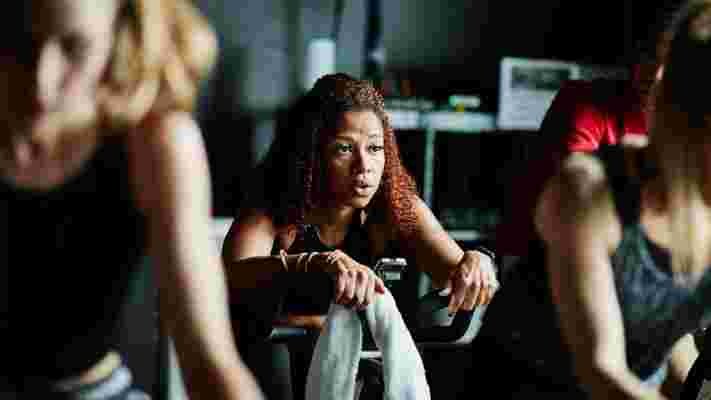
According to Byrne, while fitness trackers can provide a source of motivation, it is also possible that if your goals are too high or aren’t met regularly, they can be demotivating.
“Whereas someone without a tracker may engage in a lower level of activity and feel content with their effort,” he adds. “They are a double edged sword in that way – they can be a source of motivation or demotivation, depending on how you use them.”
He also adds that not all fitness trackers are created equally. “How they measure will vary, the quality of the sensors and software will differ and thus the results will vary between devices.
“Motivation is difficult to maintain, so I would recommend using trackers to help while you build the habit of daily activity or better sleep.”
There are many ways to tackle insomnia but what works for one person, doesn’t always work for another. However, the 4 7 8 sleep method uses the one thing we all have – our breath – and claims to deliver a simple solution to help you relax and drift off to sleep.
The 4 7 8 breathing method for sleep and stress reduction was devised by Dr Andrew Weil as a way to help people relax and promote healthy sleep, and, when practiced regularly, it is also said to lower blood pressure, aid digestion and help combat insomnia.
As my sleep tracker often reminds me, I’m prone to the odd bout of insomnia, and to waking up for long periods in the night, despite having a quiet room to drift off in and a comfy mattress to snooze on. So I’ve been really curious about this viral sleep hack and whether it actually works.
I put the 4 7 8 sleep method to the test over a period of five weeks to find out whether it really does work or if it’s just hype. But first, here’s the 101 on this breathing technique and how it works…
What is the 4 7 8 sleep method?
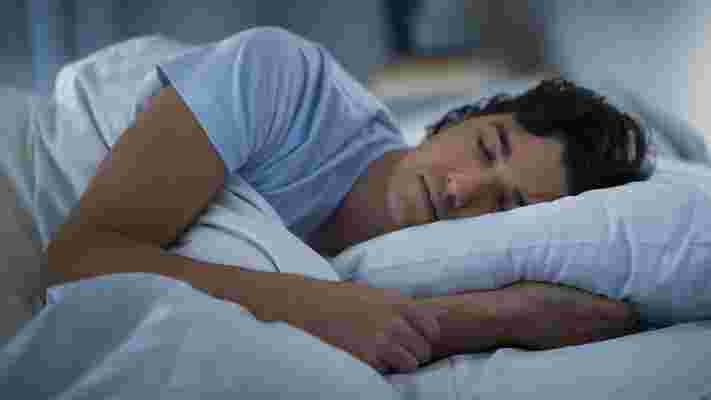
The 4 7 8 breathing technique is something anyone can do in order to fall asleep more easily. And the good news is it’s very simple and takes less than a minute or two a day to get up to speed.
The 4 7 8 breathing method for sleep was devised by Dr Andrew Weil (the Director of the University of Arizona’s Center for Integrative Medicine and a Clinical Professor of Medicine and Professor of Public Health), as the “ perfect, portable stress antidote .”
This purposeful deep breathing takes the body from the shallow panicked breathing of the sympathetic nervous system, which is all about fight or flight, and helps you tune more into the body’s para-sympathetic nervous system, which is more restful and relaxing.
It won’t take long for you to notice the effects of 4 7 8 breathing and you can soon start to use the technique to help you get on top of insomnia, anxiety and general stress, any time, anywhere, even in the moment.
How to use the 4 7 8 method to fall asleep
One of the most important things about using the 4 7 8 method to fall asleep is that you practice it regularly during the day. And the more you do it, the more effective it becomes. It is incredibly quick to do and can be done literally anywhere. First breathe out with a ‘whoosh’ through the mouth, and then follow these three easy steps, counting the seconds in your mind:
And that’s it. Do these rounds four times, and repeat once or twice a day. You can eventually build up to eight rounds twice a day, but no more than this. And if you find yourself unable to sleep, try practicing the rounds, counting the seconds silently in your mind until you drift off.
In the following video, Dr Weil shows you exactly how to use the 4 7 8 breathing method for sleep and stress reduction:
Does the 4 7 8 sleep method work? My experience
As someone who suffers from occasional insomnia and more frequently, work stress (which manifests in shallow breathing), I decided to put Dr Weil’s 4 7 8 breathing method to the test for sleep as well as daily living. Here’s how I got on...
Week 1: Teething problems For my very first attempt at 4 7 8 breathing technique, I have to admit I struggled a little with the first couple of rounds as my inhalations were still pretty shallow and higher up in my chest. But, placing a hand on my stomach really helped, and rounds three and four came easier, as I was able to breathe into my belly and feel it pushing out.
Counting the seconds in my mind became quite rhythmic, and after only a couple of days I was genuinely surprised at how focused I felt while I was practicing the technique.
I did these rounds just once a day, four times in the morning. It also took a little practice to hold my breath for seven seconds, but the key here is to do it really softly rather than strain to ‘hang onto’ the inhalation.
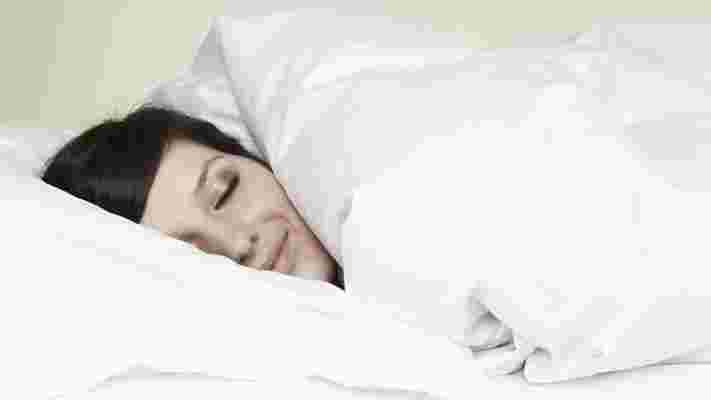
Week 2: Taking the focus away from stress For this week I decided to stick to four rounds, but upped it to twice a day – once in the morning, and again just before bedtime. After last week’s practice, this came fairly easily, and I was also able to test out the 4 7 8 sleep method when I was kept awake by a car alarm at 3am in the morning. Still, I had to reach for my sleep earplugs when the alarm just wouldn’t quit.
By focusing on the sensation of the breathing, and keeping count in my mind, this drew my attention away from stressing about the annoying noise from outside and, before I knew it, I was waking up the next morning, feeling pretty refreshed.
Week 3: It’s helping me to fall asleep faster This week I was able to really put the technique to the test, as I pushed the rounds to six times, twice a day. I also had an incredibly hectic week with deadlines as well as late nights, so it was crucial that I was able to fall asleep easily.
As soon as I got comfy on my pillow , I practiced the 4 7 8 breathing method to help me drift off. I’m not sure I even got to two rounds for most nights before falling asleep.
I also noticed that it was sometimes easier to focus on my work during the day, especially when I became distracted by work emails. I was finding that my breathing was becoming deeper and the inhalations were directed into my belly, rather than feeling tight in my chest.
Week 4: It’s helping me get back to sleep quickly I decided to stick with six rounds, twice a day for this week. Not only was this week less hectic than last week, but I wanted to really focus on the breathing technique with a less stressful work day ahead of me.
It might sound a little odd, but I was starting to find the whole notion of breathing properly really enjoyable! It was becoming easier to get straight into the breathing, plus my sleep was definitely deeper. I also found it easier to wake in the morning and jump straight out of bed.
I woke up in the night twice this week, but was able to get back to sleep pretty quickly; the first night I practiced two or three rounds of breathing before nodding off, but the second time just the simple act of thinking about my breathing meant I went back to sleep almost instantly.
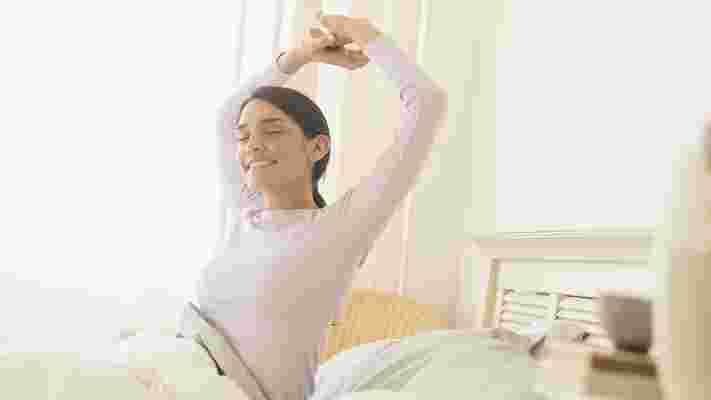
Week 5: I’m panicking less and remembering to breathe I’m again sticking with six rounds twice a day for this week, and to be honest, I feel this is probably enough for me. Dr Weil advises no more than eight rounds twice a day, so I might increase it in the future, but, for now, six rounds is hitting the sweet spot.
I’ve had a couple of disruptive nights this week, including waking twice in one night. However, and somewhat crucially, I’ve noticed I’m feeling less stressed about the fact I’m waking in the night, knowing that the combination of breathing and counting will soon get me back to sleep.
I do genuinely feel calmer during the day too, and even when I’m put on the spot in work meetings for instance, I’m able to just take a second to focus on breathing into my belly, rather than default into panic mode. Because of the daily practice twice a day, it’s almost become second nature to remember to take a proper deep breath whenever a stressful situation arises.
Why I recommend the 4 7 8 sleep method
While I can’t promise the 4 7 8 breathing technique will work for everybody, it certainly made a difference to me, and I intend to continue with it. I hope to see some proper long-term effects too, such as a reduction in general anxiety levels and better digestion, as well as all the other good things that come with better quality sleep. I hope it works for you too.
Read more:
This article is part of TechRadar's Sleep Week 2022 celebration (running until Saturday 19 March), a week-long look at all things slumber. We'll be bringing you proven techniques and tips to help you sleep better, and have rounded-up all the top-rated tech to transform your sleep.
Leave a Comment